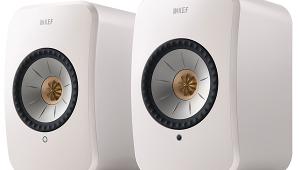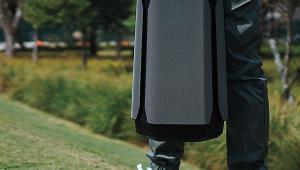Really Def Tech? I would love to give you my money and sell ALL my SONOS gear on eBay. But without the inclusion of a 12 v trigger circuit - I have no interest in your product. FAIL!
Definitive Technology Wireless Collection Multiroom Audio System Review

AT A GLANCE
Plus
Stellar audio quality
Sleek-looking
components
Minus
Android app is pretty basic
iOS app very limited
Doesn’t currently support true high-res listening
THE VERDICT
The speakers sound amazing and the W Studio soundbar is a home run even without its multiroom capabilities, but the limited Play-Fi app for streaming leaves Def Tech’s W system lagging behind the best multiroom systems.
For a while, audio manufacturers seemed resigned to give it the ol’ “lie back and think of England” routine when it came to accepting Sonos as the dominant force in the wireless audio world. Sure, they might not have liked it, but they weren’t offering any compelling alternatives of their own. And while there had been some challengers in the past, most fell well short of the Sonos benchmark and quickly faded.
This tide has changed lately, however, and the war for wireless audio is heating up. Multiple systems are now offering their spin on wireless music distribution and hoping to take a bite out of the Wi-Fi audio pie. And unlike past attempts, several of these new solutions are not only good, they’re great. Darryl Wilkinson recently reviewed two top rivals for Sonos’ throne, Bluesound (S&V, June 2014) and Denon’s HEOS (S&V, January 2015). Now, well-regarded speaker manufacturer Definitive Technology is throwing its hat into the ring by embracing Play-Fi in its new Wireless Collection.
The Surround People?
You might not have heard of Play-Fi, but I’ll wager you know the parent company behind it: DTS. Yup, as in the company best known for its multichannel surround sound formats.
Play-Fi was developed by a company called Phorus, founded by a former tech executive at Harman International; DTS acquired it in July 2012. It uses a home’s existing network—wired or wireless 802.11a/b/g/n—to distribute music. Unlike, say, Bluetooth, Play-Fi doesn’t degrade the audio signal with data reduction or compression. It arrives at the playback device as a bit-for-bit duplicate of the original file.
Another of Play-Fi’s advantages is that it’s an open platform that can be licensed by any manufacturer, so devices from different brands can happily coexist and interact in the same system. This means you can mix and match Play-Fi products from Definitive Technology and any other company and have them all operate from the same control app. Since Paradigm, MartinLogan, Anthem, McIntosh, Sonus Faber, and Wadia have all announced plans to jump aboard the Play-Fi train, the Play-Fi technology should provide a ton of audiophile-quality options.
When I asked Joel Sietsema, Definitive’s director of brand management, why the company chose Play-Fi, he offered some valid and compelling reasons. He shared that Definitive considered developing its own wireless system in-house early on in the process but ultimately chose to adopt Play-Fi because “it is a high-performance solution from a proven supporter with lossless transmission.”
Sietsema added, “Definitive Technology wanted an open ecosystem so we could offer our customers the freedom of choice, and wanted to work with a partner that was committed to the high-performance audio space.”

Going for the W
Definitive’s Play-Fi lineup, or “Wireless Collection” series, designates all products with a W preceding the model name or number. While you can start a system with any one of these components (at relatively low cost), to get the full housewide Play-Fi distribution experience and a sense of how each product performs, I asked Definitive to send me the entire lineup—currently five products—for review.
In standalone, self-powered speakers, Definitive offers the cube-shaped W7 ($399) and its larger, rectangular brother, the W9 ($699). Definitive went with a reserved yet high-tech, sleek design with these speakers, both featuring a gloss black top and solid aluminum silver base with the company’s typical black-wrapped cloth around the middle. Visually, they are cool and modern. Two speakers can be paired in a left/right array to deliver improved imaging and coverage. (Pairing was limited to Android users at the time of my evaluation, though Definitive expected iOS pairing to be available in early 2015.)
The W Amp ($499) is a stereo amplifier/player module (2 x 150 watts at 4 ohms) designed to power virtually any pair of existing speakers. Adding Play-Fi to existing amplified audio systems like a home theater or stereo receiver requires the W Adapt ($399). The W Amp and W Adapt are nearly identical visually save the connections around back. Both are finished in gloss black with a stylish and angular front face and a strip of silver (on the Amp) or matte black (on the Adapt) along the top holding the few onboard controls. Definitive includes rack-mount brackets with each, allowing them to install into professional audio racks favored by custom installers. Two of these devices can be racked together in a 1U space, making for a very clean and finished look in the rack.

I’m going to offer a bit of a spoiler here and say the W Studio soundbar system ($1,299) is my favorite product in the line. The W Studio, a Play-Fiequipped version of Def Tech’s SoloCinema Studio, will likely be the company’s Trojan horse for getting Play-Fi into people’s homes. If you never even utilized the W Studio’s Play-Fi feature, it’s still a killer soundbar. But when you find out that it offers all of Play-Fi’s streaming benefits, you’ll think, “Wow! That makes TV and movies sound great! But it does even more than that?!”
At 3.3 inches deep (3.8 with the suggested wall-mount spacer rings), the soundbar isn’t as svelte as modern flat screens, but it’s thin enough not to draw undue attention to itself. While its silver end caps and cloth-wrapped design echo the look of the W7 and W9, it is the plainest looking of the bunch. The W Studio can learn commands from another IR remote, letting you easily power it on, change inputs, adjust volume, and more from any other IR remote.
The wireless sub has no controls whatsoever save a power toggle and is spared from being an entirely plain, black cube by a silver badge/Definitive nameplate on the front.
Although they’re called wireless, almost every Wireless Collection component can connect to your network via wired Ethernet or Wi-Fi (with up to dual-band 802.11n protocol), the exception being the Wi-Fi-only W Studio. Assuming your home has a robust, reliable Wi-Fi network, you should have no problem placing your devices and then walking around the house streaming to your heart’s content. This is obviously a huge benefit over systems that rely on limited-range Bluetooth for streaming, as you inherently walk off with the broadcasting device in your pocket, only to have music unceremoniously cease.
Definitive claims the system can simultaneously support up to eight separate wireless sources (smartphone, tablet, PC), with any source able to stream to eight playback devices. While this suggests a maximum of 64 devices, Definitive recommends no more than 16 products on the Wi-Fi network but claims up to 256 devices could be “theoretically supported” if connected via Ethernet.
Beyond streaming music, the Wireless components feature both Toslink optical digital and analog audio inputs (both the W Adapt and W Amp feature two analog inputs) for connecting local sources. While these sources currently can’t be digitized and streamed around the house, Sietsema commented, “There are future plans for this, and we are working with DTS to determine when this feature would be available through the software.” Each component also includes a USB-A connection reserved for firmware updates.
As it’s designed to integrate with an HDTV, the W Studio features 3-input/1-output HDMI 1.4a switching in addition to Toslink and analog inputs. Since many TVs don’t pass unadulterated Dolby Digital or DTS bitstreams from their digital outputs, connecting your set-top box or Blu-ray player directly to the soundbar yields higher-quality, multichannel audio. The soundbar supports both Dolby Digital and DTS decoding, but not lossless Dolby TrueHD or DTS-HD Master Audio. (Incidentally, the ability to directly connect multiple HDMI sources and to directly decode Dolby Digital and DTS signals is a notable advantage the W Studio has over Playbar, the competitive Sonos offering.)
Setup
Wireless audio systems are generally intended for DIY installation, so setup needs to be relatively simple and painless. Fortunately, Definitive succeeds on this front, as both the initial setup and adding new devices is a breeze.
Wired setup is a no-brainer. Simply connect the component to your network via Ethernet, and the new device will be discovered when you open the app; it will then prompt you to name it. Done.
Wi-Fi setup differs slightly with Android and iOS devices. The Android app involves just selecting your home’s Wi-Fi network and entering any security credentials.
The iOS app requires you to first go to your Wi-Fi connections tab, where you’ll connect directly to the new device, à la “PlayFi2Device008922.” That done, open the Definitive app and select your home’s Wi-Fi network and enter the password.
- Log in or register to post comments

































































